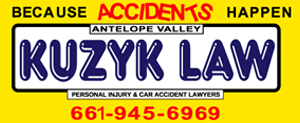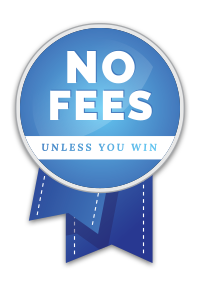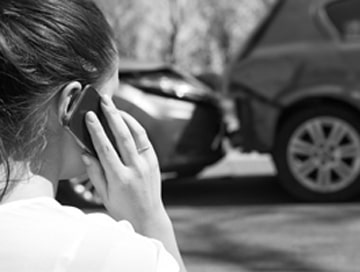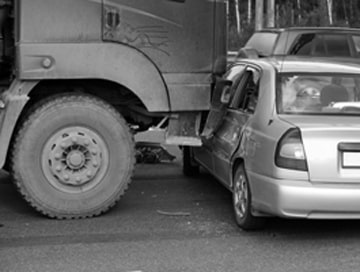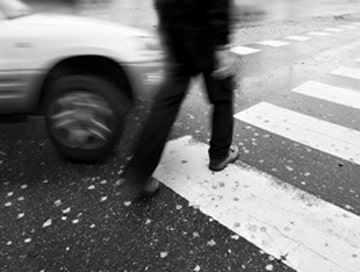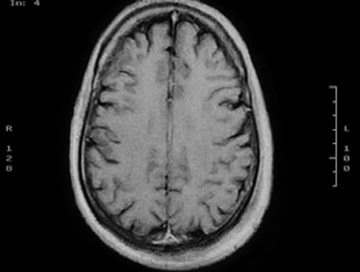
If someone you know has been in a car accident, you may have heard them say they wished they had gap insurance. You probably wondered, “What is gap insurance, and what does it cover?” Here’s an explanation of this often underutilized but vital type of insurance coverage so you can decide if it’s right for you in case the unexpected happens.
Having the appropriate insurance policies can protect you in the event of an accident, but you have to have purchased them before an incident. You can be prepared for the worst by imagining what you would do after a crash and putting as many protections in place as possible.
At Kuzyk Personal Injury & Car Accidents Lawyers, we specialize in car accidents, and we advise many of our clients in Lancaster and the Antelope Valley to invest in gap insurance through a reputable carrier. We also encourage everyone to understand their policy before they ever need to file a claim so they can make adjustments prior to needing the insurance.
What Is Gap Insurance?
Filling holes in auto insurance coverage
The term “gap insurance” offers a hint about what it was designed to cover. It fills the gap between the actual cash value (ACV) of your vehicle and what you would need to pay on a loan or lease if a car or truck is totaled in a crash.
Most folks aren’t aware that their vehicle’s value depreciates significantly the moment they drive it off the lot after purchase. It keeps on depreciating over time as well. Therefore, the actual cash value of their car isn’t what they think it is. It’s typically quite a bit lower, which is what their insurance company will pay out after a claim. But meanwhile, they still have a loan for a lot more — a loan that must be paid off if the car is totaled in an accident.
An example of how gap insurance works
Let’s look at an example. Say you purchase a new vehicle, and with your down payment, you have $35,000 remaining on the loan. However, after an accident, you discover that your pickup truck’s ACV is only $27,000. The truck was totaled in the accident, so your insurance company reimburses you for $27,000. But the lender for your vehicle financing now wants the balance of $7,000 to pay off your loan. This is known as negative equity. Where does the money come from? The answer is from your gap insurance policy.
Other gap insurance facts
Gap insurance coverage can be applied whether you or another party were at fault in the accident. It can also be used to make up the difference in lease payments that must be made after your leased vehicle is totaled in a car crash. Certain policies will also cover gaps if your financed or leased vehicle is stolen and never recovered or if it is lost to vandalism, fire, or certain natural disasters like floods, tornado’s, and hurricanes.
Gap insurance is growing in popularity as the price of vehicles and the number of auto accidents have increased over the years. In fact, some auto lenders now require it in order to get a loan.
How Is Gap Insurance Different from Liability or Full Coverage Auto Insurance?
Picking up where other insurance caps out
Gap insurance was created to work in partnership with your other insurance coverage. It is only applied once your collision insurance has been paid out if your collision coverage does not meet the full amount of your vehicle loan or lease. It does not cover liability (see below). And it is not designed to be used in place of full coverage policies for collision and comprehensive; it is intended to supplement those policies to meet a financial shortfall.
This is a good time to remind you that auto liability insurance (or the equivalent with the DMV) is mandatory in the state of California to register and operate a motor vehicle. The minimum auto insurance liability you must carry is:
- $15,000 for injury/death to one person
- $30,000 for injury/death to more than one person
- $5,000 for damage to property
You must have proof of this liability insurance with you if you are stopped by law enforcement or involved in an accident. In California, you are allowed to have electronic insurance ID cards as well as paper copies. These days, most insurance companies have electronic documents you can download to your mobile device so you always have your insurance information with you.
Collision and comprehensive (AKA full coverage) insurance are not required but recommended for most vehicle owners. Collision coverage reimburses you for the expense of repairing or replacing your vehicle after an accident in which you were at fault or where the other party at fault has insufficient auto insurance. You may have used your collision insurance in the past for dents or broken parts after a small accident. Comprehensive insurance covers your car if it is lost or damaged due to theft, vandalism, fire, storms, and many types of natural disasters.
Can Gap Insurance Be Applied to Personal Injury Expenses?
Liability versus gap insurance
It’s important to reiterate here that gap insurance only covers vehicle loss. It does not protect you in cases of liability. Liability expenses could include emergency and medical care for other motorists, as well as long-term care, lost wages, or other expenses resulting from you being at fault in an accident. Your liability insurance should cover those things, as well as loss of life, so you don’t have to pay out of your own pocket or lose your personal assets.
If you are concerned that your liability insurance isn’t high enough, you can always purchase extra coverage. The minimums outlined above are just that. They are the least amount you are required to carry. We would advise our clients with young drivers, a history of serious accidents, or high net worth to consider carrying more auto liability insurance, just to be on the safe side.
Because there is a cap to your liability coverage, just like there is for your vehicle coverage, you would have to make up the difference between your liability cap and any damages you are required to pay by a court of law. You don’t want to lose your savings, your retirement accounts, your home, or your business to satisfy a legal judgment. That’s where having additional liability insurance can be of real benefit.
You want to find that happy medium between what you can afford and what gives you the greatest peace of mind when purchasing auto coverage. So, having solid liability coverage, collision and comprehensive insurance, and gap insurance all make good sense in most cases.
Are There Exclusions for Gap Insurance Policies?
What’s not covered
There are some limits to what a gap insurance policy will cover, known in the insurance industry as “exclusions.” It’s essential that you discuss any exclusions with your insurance carrier, as they can vary from policy to policy.
First of all, gap insurance rarely covers your deductible. That’s the amount you pay out of your own pocket before your auto insurance policy is activated. It’s usually around $500 or $1,000. Gap insurance reimbursement is typically calculated after your deductible has been applied.
As discussed above, gap insurance does not cover medical payments, long-term care from injuries, lost wages, death, or funeral costs. This insurance is only applicable to vehicle loss; your liability insurance would have to cover expenses relating to injuries.
Gap insurance does not cover mechanical failure. For example, if your car’s engine fails for some reason, whether due to lack of maintenance, wear and tear, or simple bad luck, gap insurance cannot be applied if the vehicle is no longer operable.
Usually, extended warranties are not covered by gap insurance. Also, gap insurance does not cover modifications you make to the vehicle after you purchase it, such as body kits, high-end AV systems, or engine upgrades. Overdue payments on your vehicle’s loan or lease are also not covered.
Is Gap Insurance Right for You?
Reasons to buy gap insurance
Sometimes you have no option but to purchase gap insurance if you are financing a new vehicle. More and more commonly, lenders are requiring gap insurance in addition to liability, collision, and comprehensive coverage.
But if gap insurance is optional for you, you may be evaluating if it’s right for your unique situation. You need to look at your personal finances, the cost of your car, and your loan or lease to determine if gap insurance is a viable solution.
You definitely want to consider gap insurance if you have a vehicle loan of 60 months (five years) or more. The likelihood of having a significant portion of the loan left to pay after an accident is greater the longer the terms of the loan are.
Another reason to buy gap insurance is if you own a car that is known to depreciate faster than other vehicles. This could leave you with a larger amount of negative equity in the event of an accident because the difference between your vehicle loan and your car’s actual cash value can be significant.
In general, new luxury vehicles and electric cars tend to depreciate the fastest. The former become outdated quickly and don’t have high resale value, while the latter rely on technology that is still being developed and is therefore relatively unknown.
Did you put less than 20 percent down when you purchased your vehicle? That’s another reason to get gap insurance. A lower down payment usually transfers to a high loan balance that could be a financial strain after an accident that totals your vehicle. Likewise, if you transferred negative equity from an old loan into your latest vehicle loan, known as loan rollover, you want to protect yourself with gap insurance because you likely have a higher-than-normal loan balance.
What Else Should You Know About Gap Insurance?
Common questions
You don’t have to meet any of the criteria listed above to get gap insurance, although those are the prime reasons people purchase this extra coverage. You can take out a gap insurance policy any time you feel an accident could leave you in financial straits. Gap insurance might make sense if you’re stretched tight financially with a large car loan, such as after losing your job or having a child start college.
How long does gap insurance last? Your gap coverage typically aligns with your collision insurance policy dates. It’s best to check with your insurance carrier to make sure your gap insurance is renewed every time your collision policy does. Often this is done automatically once you start gap insurance protection.
Many of our clients question whether they need gap insurance long term. The answer is that you only need this type of extra coverage when you owe more than your car is worth. Once you pay down your vehicle loan to a certain level, it no longer makes sense to have gap insurance. You will want to crunch the numbers to calculate when that will occur so you can end your gap insurance policy accordingly.
You might be wondering if gap insurance is expensive. Most of the time, we find it’s very reasonable — sometimes just $5 or $10 added onto your collision policy each month. Insurance companies can afford to offer it for so little because not every client winds up needing gap insurance, so carriers make more than they pay out with these types of policies.
Have You or a Loved One Been in a Motor Vehicle Accident Recently?
Contact the car accident experts at Kuzyk Personal Injury & Car Accidents Lawyers
It would be great if car insurance protected everyone from car accidents; unfortunately, it cannot. If you or a family member have been in a vehicle crash lately, you may have a lot more to worry about than whether you can pay off your car or truck loan with gap insurance. At Kuzyk Personal Injury & Car Accidents Lawyers, we are experts in helping people after car accidents, whether they need assistance negotiating an insurance settlement or need to go to court to get the damages to which they’re entitled.You don’t have to go it alone. Our team of professionals has the time, resources, and knowledge to help you get the best possible result after an accident so you can get on with life quickly and with less stress. You can contact us 24/7, 365 days of the year by calling 661-945-6969 or by using our online form to set up a no-cost consultation. If you live in Lancaster or the Antelope Valley, don’t delay. Reach out today.
